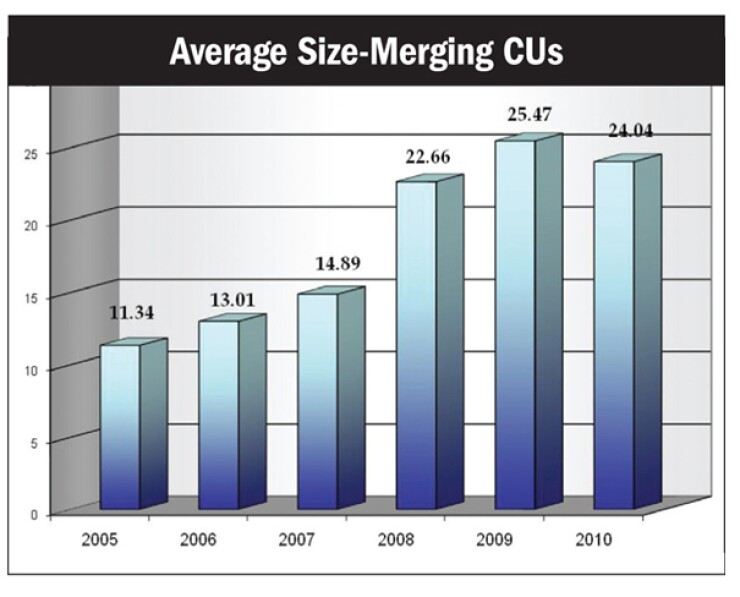

REDDING, Calif.-As credit unions continue to mull mergers, veterans of the process are reminding that due-diligence and planning are what make for successful CU marriages.
While there has been a consolidation among DP vendors and increasing use of open architectures, one of the biggest hurdles in the process remains integrating different CUs' core systems and software. In some rare situations, such as when Members 1st CU in Redding, Calif. acquired UFCW #916 FCU, "they were so small that most everything, IT-wise, we did manually," said CEO Mark Moore.
More often than not, however, systems integration is one of the more intricate, time consuming elements of the merger process and when mergers turn ugly, are usually the culprit. In Parchment, Mich., the $630-million First Community FCU merged with Education First CU and then acquired via purchase and assumption First American CU. CEO Cheryl DeBoer noted that because her CU is looking at switching to a new software system, each of the merger partners continues to run its own data processing solutions for the time being.
"We have to do something on our end first, and we have to do that here and then decide which one we're going to bring over first and then second," said DeBoer. Additional challenges come in when integrating numerical systems and account numbers. "Do you renumber everybody or do you integrate three numerical systems?" she pondered. "Do you add a 99 on the front or on the end to make the [account] numbers different?"
Compounding the situation is that switching data processing systems is time-consuming, to say the least, and DeBoer said that instituting a new system requires about nine months of lead time.
Board & Management Issues Also Come Into Play
While management issues often get the focus, several CUs reminded that board issues can not be overlooked.
In early January, Mainstreet CU in Lenexa, Kan.-a Kansas City suburb-completed its fifth merger in two years, acquiring $13-million Wyandotte CU, bringing Mainstreet's assets to $263 million, with 57,000 members. What has made those recent mergers work, according to CEO John Beverlin, "was that our board and their boards had a good comfort level together." It helped, he said, that Mainstreet began as a teachers' credit union as did some of the merger partners, "so the boards really hit it off."
But First Community's DeBoer noted that mergers also mean certain issues need to be ironed out with boards, including negotiating the number of board seats and how many board members-if any-will come aboard at the merged CU.
The other critical human element is staff integration and related cultural issues. Mainstreet's Beverlin said that his employees often get assigned to work in the offices of the merged CU and vice versa. That not only helps familiarize staff with a new way of doing things, he said, but it also can serve as a team-building opportunity and a way for new employees to become familiar with the CU's organizational culture.
"We spent time there at those facilities, and we could see that they treat their members the same as we treat ours," Beverlin said of the latest merger. "They would know their members by name and greet them and carry on conversations," just like Mainstreet does with its members.
Geographic Barriers Are Another Issue
Mainstreet has nine branches spread throughout the Kansas City region. But in other cases, CUs in mergers aren't located as closely to one another. Case in point is Billings, Mont.-based Valley FCU, which recently merged with Cody Schools FCU, based two hours away in Cody, Wyo.
Senior Vice President Jean DeVerniero said that Valley plans to hold a town hall meeting in Cody to talk about the merger and inform members about the new products and services that will be available.
"It's a huge opportunity for their members," she said, "because they're still going to see the same faces and go to the same branch, but now they have a ton of other products they can utilize. And a lot of their members are in Billings quite often, so they can conduct their business here, too."
DeVerniero and many interviewed for this story said that that sort of thing is ultimately the best possible outcome for a merger: that the only thing a member notices is a new name and more services available at more locations.





